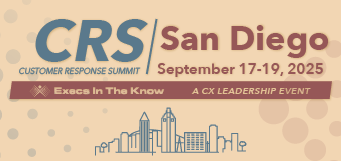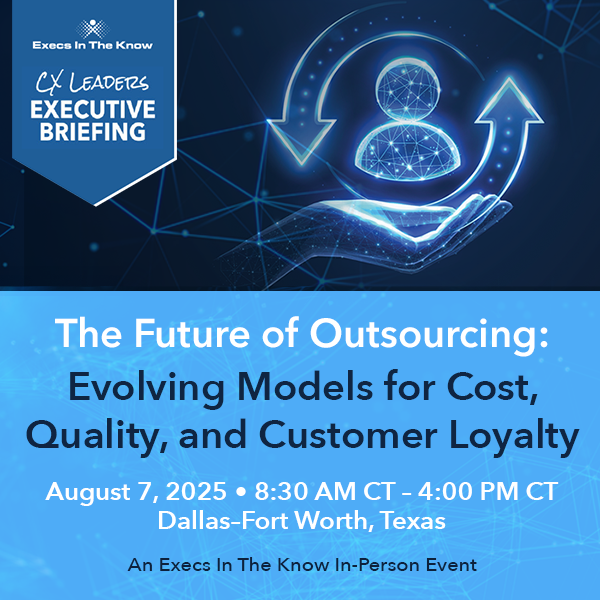You know AI is here to stay. You’re smart, you get it. But how long have you been in planning mode? And how quickly should you expect results once you introduce AI into your CX program?
The whole promise of this cool AI revolution/evolution spreading through our industry is quick, efficient results. So instead of focusing on how big you could go with cutting-edge tech, why don’t we talk about practical AI deployment in the contact center, and just how much can be accomplished in one week?
Yes, a week. Not a year, not a few months.
It sounds counterintuitive, doesn’t it? To think smaller with AI. However, this new technology can be somewhat overwhelming. Imagine what could happen if we made it a goal to get to value in the shortest time possible—and make a real, measurable impact—by taking a practical, step-by-step approach of looking for high-ROI opportunities and scaling AI use in a way that makes sense for your organization.
While your competitors are frozen by indecision, trying to find the very best tools that won’t be outdated in six months, your contact center will be scoring small, substantial wins by using what works.
So, now that you’re ready to build a roadmap to quick value, here are our four suggestions.
1. Clearly Define Your Goals
Driving around with no destination in mind kills time and wastes gas. The same is true for AI implementation: you should know where you’re going before you plan how to get there.
Start with clear, measurable goals in mind. For example, let’s say you notice CSAT needs a boost and determine that shorter handle time and fewer interactions prior to resolution will help customer satisfaction. That gives you two metrics to actively target (AHT and FCR) and a meaningful way to measure results (CSAT).
What are some material benefits you could track and measure in a quarter? Make a list of all the places where AI could move the needle. Then red-circle the top two or three, roll out those initiatives, assess the results, and repeat the process the following quarter with two or three updated priorities.
Staying clear on your goals drives progress—and helps prove that progress is being made.
2. Start with Quick Wins
Let’s go back to that statement about showing results in one week. How is that possible?
You start with quick wins. Beware of getting stuck in analysis paralysis or, worse, falling into the trap of expensive custom-built solutions with lengthy development periods.
You don’t need bespoke AI. You need AI that can:
- Launch fast to stay on top of rapidly evolving technology
- Deliver real-world results quickly to create momentum and build habits
- Show stakeholders real numbers instead of projections and estimates
AI technology continues to advance rapidly—often from week to week—so you just need to dive in. Instead of a never-ending plan that tries to accomplish everything in one fell swoop, develop an ongoing roadmap that starts with, well, the first step.
For instance, a quick-to-implement use case like generative AI-enhanced case notes can make a major improvement in overall handle time and can improve the quality of customer records, which in turn improves future customer interactions.
But this approach also means letting go of all-or-nothing perfection. Expect that some initiatives won’t work out as desired. And others may surprise you, having a much bigger impact than expected. You may even uncover new uses you never could have anticipated.
That’s all part of the iteration process, which is the smartest approach to implementing AI in the contact center right now. As long as you stay open and observant, you win.
3. Partnership Matters
A quick-to-launch, iterative roadmap approach is all fine and good, but if you don’t have a technology partner who supports it? You’ll go nowhere fast.
When researching AI partners, pay attention to the promises. AI can do a lot, but it can’t do everything—at least, not yet. Is the vendor honest about where technology will be most helpful to you, or are they presenting it as an immediate solve-all?
Look for a partner who asks you about your organization’s goals and then helps you develop and understand the roadmap to achieving them. Ensure you’re aligned on how a partner’s solution aligns with your brand and workflows.
And be very wary of any partner that tries to sell you on a fully bespoke tool. It will be obsolete before you ever launch.
Beyond technology partners, you also want to consider your employee partners: the agents. Gather feedback from them on where they could use support, how a given AI tool fits their needs, and whether or not they like it. After all, the most effective tool is the one that gets used.
4. Avoid Fluffy AI Solutions
If you want to see actual improvements in the contact center, you must choose actionable AI tools that solve real problems you already face. That’s the only way to add measurable value.
There are a lot of “fluffy” AI solutions that don’t do much more than collect data. Now, data is important—especially if it gives you deeper insight into contact center operations. But data alone won’t solve anything.
Go beyond data collection and choose AI that supports frontline agents. Choose AI that enables new and effective methods of self-service. Basically, choose AI that actually solves a problem.
You truly can accomplish a lot in one week with AI. So it’s time to get started.
Contributed blog post written by Laivly.
Laivly’s proprietary agentic AI platform solves the challenges of cost, consistency, and productivity for contact centers and customer care programs around the world, with its AI agent, Sidd, enabling industry-leading agent support and self-service solutions.







